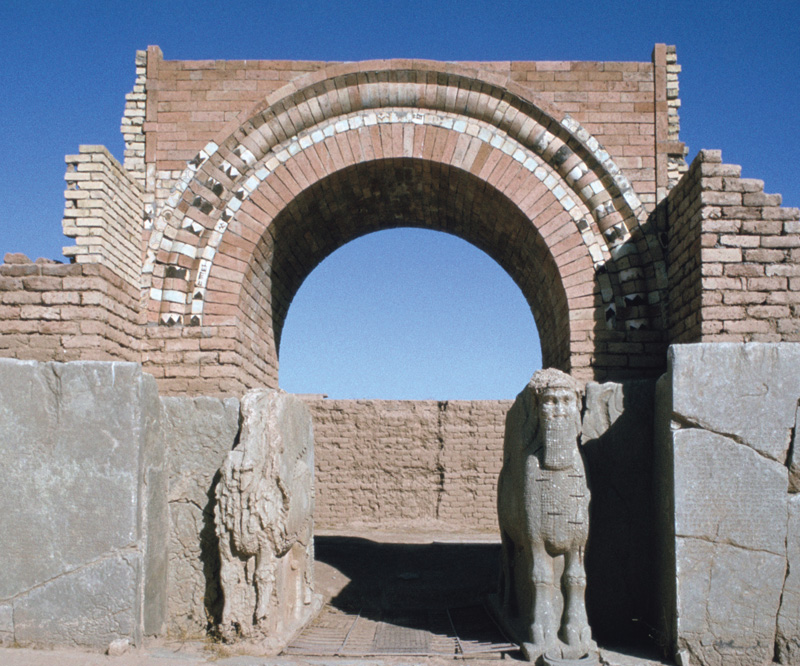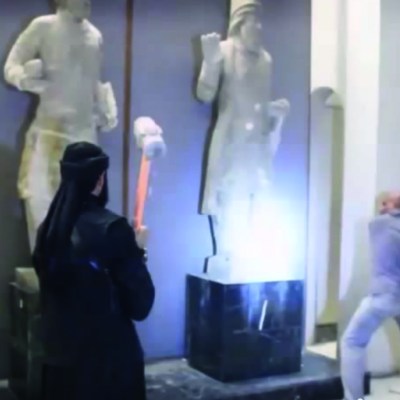Last month’s reports that Islamic State militants had launched an iconoclastic attack on the ancient Assyrian city of Nimrud in Iraq appear to be confirmed, in a shocking video recently posted online. The ISIS footage appears to show militants attacking neo-Assyrian era statues with chisels, power tools and bulldozers, before razing the entire north-west part of the Palace of Ashurnasirpal II to the ground using explosives. Although it has not been possible to independently verify the footage, it matches earlier ‘reports of explosions’ and of the use of heavy machinery at the site, relayed to Western organisations by local sources.
Founded in the 13th century BC, the city of Nimrud flourished between 900–700 BC and was one of the capitals of the vast Assyrian empire. It is one of Iraq’s greatest cultural and archaeological treasures, and a site of global importance as a seat of Assyrian culture, which had great and wide-reaching influence across the globe. Its apparent obliteration is an enormous symbolic and material blow to the region, an attack on its future cultural identity as well as its past.
The loss of heritage sites – and of the economic and academic opportunities they might have fostered – will have social and economic repercussions for many years to come. In a recent feature for the TLS, Eleanor Robson has noted how ISIS is dismantling not just the sites themselves, but the country’s academic and cultural infrastructures. This constitutes a direct attack on people’s livelihoods which – it is crucial to remember in the midst of these discussions – all too often goes hand in hand with direct attacks on people’s lives.
UNESCO, which denounced the destruction when it was first reported in March, issued a new statement from its director-general Irina Bokova yesterday (Monday 13 April), reminding the world that ‘The deliberate destruction of cultural heritage is a war crime’. Other commentators, including Mark Altaweel for Apollo, have called for military intervention as the only way to put an end to the systematic destruction of the country’s heritage. At the same time, more and more commentators are pointing out that now, too, is the time to focus on what remains.
Statues, sculptural reliefs and other artefacts from Nimrud have been removed over the years to international collections. Other treasures are known to remain onsite, but unexcavated. Some nearby archaeological zones are almost completely unexplored. Bokova has claimed that the ‘propaganda and hatred that underlines these acts…demands in response messages of peace and knowledge of history’, and UNESCO has launched a global campaign, #Unite4Heritage, that provides a platform for people ‘to speak out against these crimes via all possible channels.’ And as Apollo’s editor Thomas Marks has argued, we should feel ‘compelled’ to seek out the Assyrian treasures in our local museums, ‘and, so far as possible, seek to learn about the complex cultures that produced them.’
Islamic State violence against local communities, in all its forms, must be and has been unilaterally condemned. But only by fostering sustained, and enhanced, international interest in the history and heritage of Iraq and the wider region, will the international community be in a position to offer meaningful long-term support to the people most directly affected by this year’s events.
Related Articles
Can Iraq’s Antiquities be Saved? Interview with Mark Altaweel
Letter: John Curtis on the cultural desecration of northern Iraq
Red Alert: Syrian cultural artefacts are at risk from looting and illicit trade(France Desmarais)



